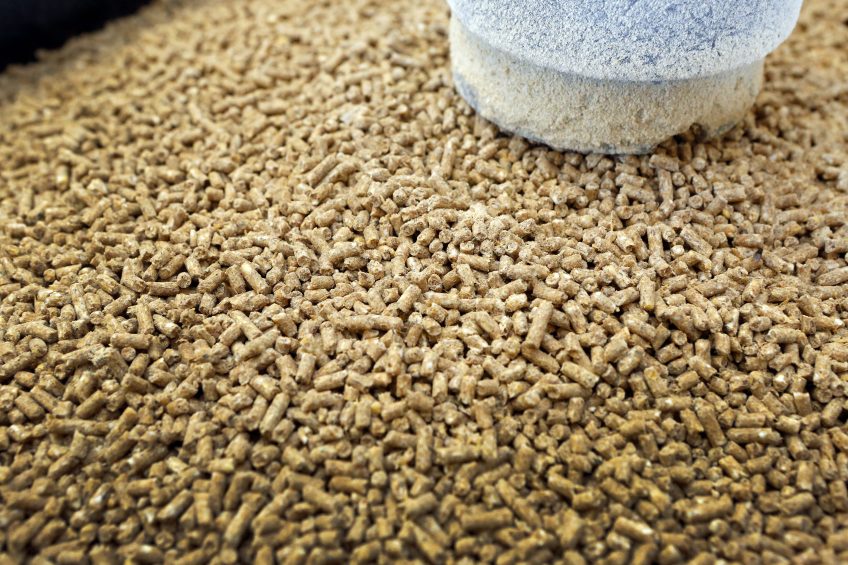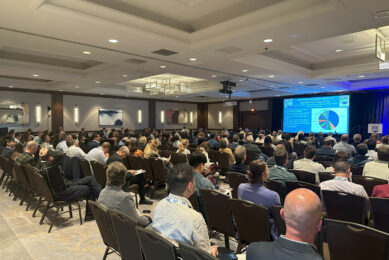Pelleting increases value of pig diets

French researchers have evaluated in 3 trials the effect of pelleting on the nutritional value (energy and proteins) of complete feeds for pigs.
It is already known that pelleting of complete feeds does have a positive effect on performance indicators, like average daily gain (ADG), feed conversion ratio (FCR) of piglets and growing pigs. Until now, however, only few references existed on the effects of the pelleting on individual cereals.
The trials were conducted at the research station of Arvalis – Institut du Végétal in Villerable, France.
A better energy digestibility
The target of trials 1 and 2 was to evaluate energy digestibility for piglets and growing pigs. Of 4 tested complete feeds, based on cereals and distributed either in flour or in pellets form, 3 were composed of only 1 cereal, being wheat, barley or maize. The last one consisted of a mixture of the 3 cereals in similar proportions.
In both trials, pelleting significantly improved energy digestibility, for both piglets as well as growing pigs.
Energy digestibility for growing pigs
The life stage of the animals was of influence, in determining whether or not pelleting made a difference. When given just after weaning, the pigs responded differently to the diets than later in the growing stage.
In the barley diets, for instance, energy digestibility turned out to be significantly higher when presented in pelleted form to growing pigs. The results with piglets, on the contrary, showed that the positive effect of pelleting on feeds based on maize and barley, is not observed when the feed is presented in a mixed form (mixed form = mixture of the 3 cereals).
For piglets, for all cereals, pelleting significantly improved energy digestibility (+1.1%). With a stronger increase for barley-based (+1.6%) or maize-based feeds (+1.9%), it is translated by an increase of digestible energy content of +89 and +106 kcal/kg dry matter.
Energy digestibility improved by pelleting
For growing pigs, the energy digestibility of feeds is also significantly improved by pelleting (2.4%). So, pelleting tends to improve the value of wheat, maize and mixture feeds respectively by 2.3%, 2.1% and 2.2%, but with no statistically significant effect.
The effect observed was, however, significant with the feed based on barley (+3.1%), equivalent to an increase of 136 kcal/kg dry matter of digestive energy of feed.
More ileal digestibility of proteins and lysine
The aim of the 3rd trial was to evaluate the standardised ileal digestibility of proteins and amino acids of the mixture feed (25.8% of each cereal), presented in flour or pellets.
The average protein digestibility of the feed with 3 cereals, went from 83.7% to 85.9% when feed was pelleted. Pelleting also significantly improved lysine digestibility of 1.5% compared to the mixture feed in flour presentation.
Valorisation for amino acids
For all the amino acids, the valorisation was 88.7% in flour presentation versus 89.8% with pelleted feed. With more improvement for threonine, valine and tryptophan (+1.2%; +1.7% and +1.9% respectively) than for methionine and cysteine (+1.0%).
This item is a summary of an article written by Justine Danel, Arvalis-Institut du Végétal, Paris, France. It was published in Tech Porc (Jan-Feb 2017), a magazine published by the French Pork and Pig Institute (IFIP) and the Chambers of Agriculture of Brittany.











